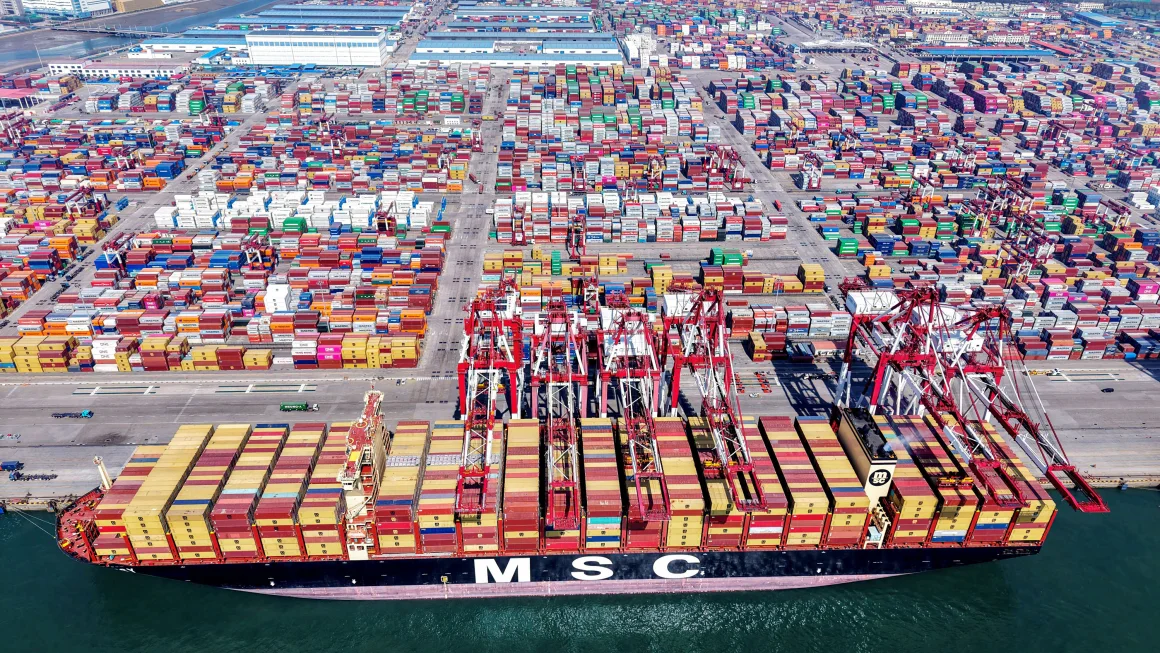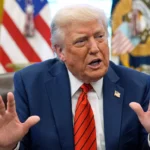China’s economy delivered stronger-than-expected growth in the first quarter of 2025, even as the country braces for the full impact of escalating tariffs imposed by U.S. President Donald Trump. The performance sends an optimistic signal from Beijing, but economic headwinds loom large.
GDP Surprises Analysts with 5.4% Growth
China’s gross domestic product (GDP) grew by 5.4% in the first quarter, the National Bureau of Statistics (NBS) reported on Wednesday. The figure exceeded the 5.1% forecast by more than 50 economists surveyed by Reuters and continues a trend of unexpectedly strong export-driven growth at the end of 2024.
“The national economy had a steady and good start, continuing the upward trend,” said Sheng Laiyun, deputy director of the NBS, during a press conference. “However, we must also see that the current external environment is becoming more complex and severe, and the effective domestic demand growth momentum is insufficient.”
Trade War Tensions Escalate
The first-quarter data was recorded before Trump’s latest round of tariffs—described as “reciprocal” and totaling more than 145%—took full effect in April. Earlier in 2025, the U.S. president had imposed two rounds of 20% tariffs on Chinese goods related to fentanyl.
While those measures have yet to fully impact the numbers, Beijing made it clear that the growing trade barriers will be felt. Sheng emphasized China’s disapproval of the U.S. approach.
“China opposes the US tariff barriers and trade bullying,” he said. While acknowledging that the tariffs would place “certain pressure” on the economy, he added that they “cannot change the general trend of China’s continued long-term economic improvement.”
“China’s economic foundation is stable, resilient and has great potential, so we have the courage, ability and confidence to cope with external challenges and achieve the established development goals,” Sheng added.
Retail and Industrial Sectors Outperform
In addition to GDP growth, consumer and factory activity also showed resilience. Retail sales climbed by 5.9% in March compared to a year earlier, while industrial output grew by 7.7%—up from 5.9% recorded during the January-February period.
Beijing recently reaffirmed its full-year growth target of “around 5%,” signaling confidence in its economy despite uncertainty over exports and tariffs.
Export Surge May Not Last
Analysts warn, however, that the current export strength may be temporary. Exports surged 12.4% in March, likely buoyed by overseas companies rushing orders ahead of Trump’s tariffs.
“We think the tariff shock poses unprecedented challenges to China’s exports and will set forth major adjustment in the domestic economy as well,” wrote UBS economists led by Tao Wang. UBS has revised its full-year growth forecast down to 3.4% from 4%.
Goldman Sachs also downgraded its projections, now expecting 4% GDP growth in 2025 and 3.5% in 2026, citing the weight of U.S. tariffs on Chinese exports.
Stimulus and Domestic Spending May Be Key
With exports potentially slowing, analysts believe Beijing will lean on domestic levers. Zichun Huang of Capital Economics noted that the government’s March budget allows room for increased fiscal spending, with further monetary easing likely.
“The budget announced in March allows for a further ramp up in fiscal spending. And further monetary easing is likely to happen soon,” Huang wrote.
Diversification Beyond the U.S.
China is also working to reduce reliance on the U.S. export market. According to Sheng, China’s exports to the U.S. fell from 19.2% of total overseas shipments in 2018 to 14.7% in 2024.
“A diversified market pattern is taking shape, which also means that our dependence on a single export market in a certain country is declining,” Sheng said. “Therefore, China’s foreign trade is relatively resilient. The just-released first-quarter foreign trade data also shows that despite the increase in external restrictions, exports still grew by 6.9%.”
Diplomatic Moves and Trade Leadership Shakeup
On the diplomatic front, Beijing is pursuing closer regional ties. Chinese leader Xi Jinping is on a week-long visit to Southeast Asia, promoting China as a more stable trade partner than the U.S.
Southeast Asia, through the 10-nation ASEAN bloc, became China’s top export market in 2023. In meetings with Vietnamese officials this week, Xi emphasized cooperation on global trade and supply chain stability.
Meanwhile, Beijing appointed Li Chenggang as international trade negotiation representative and vice commerce minister, replacing Wang Shouwen, who played a key role during the previous round of trade tensions with Trump.
With momentum still on its side but new tariffs set to take a toll, China’s challenge now lies in sustaining growth through domestic policy shifts, global outreach, and economic diversification. Whether that’s enough to offset the weight of trade pressure remains to be seen.






